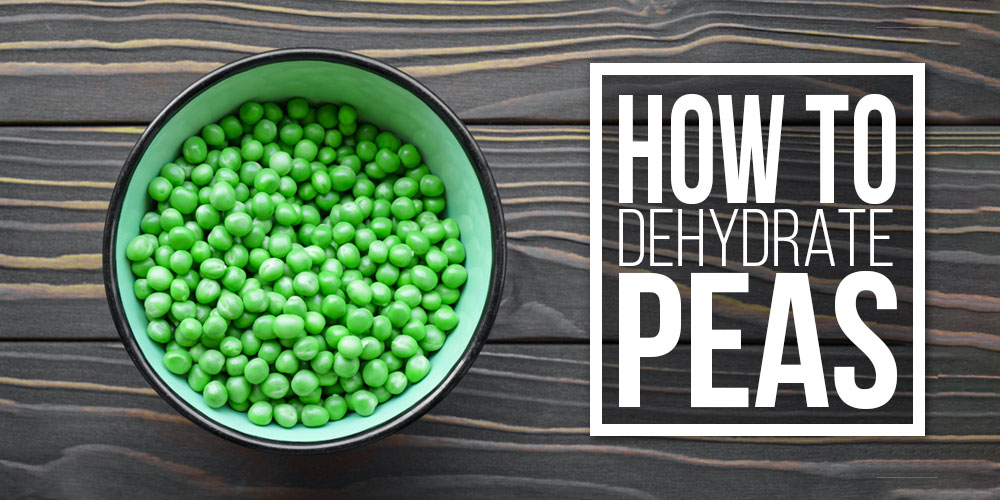
NAVIGATION

Hi, I’m Ryan
Part of my homesteading plan includes preserving vegetables from my garden. I learned how to dehydrate food and have never looked back. It fits into my life easily and seamlessly, plus it’s the perfect solution for any extra veggies I harvest.

If you’re committed to tiny living like I am, storing peas can present a bit of a problem.
I often find my garden yields more than I can eat, and I don’t want to waste anything. Frozen peas take up room in the freezer, and canned peas tend to have added salt and other preservatives, and honestly, they don’t taste nearly as good.
I found that dehydrating peas is the perfect solution. They take up little space in the pantry and only a few minutes to rehydrate. Before you know it, those peas go from storage to stew, pasta, rice, or salad in no time.
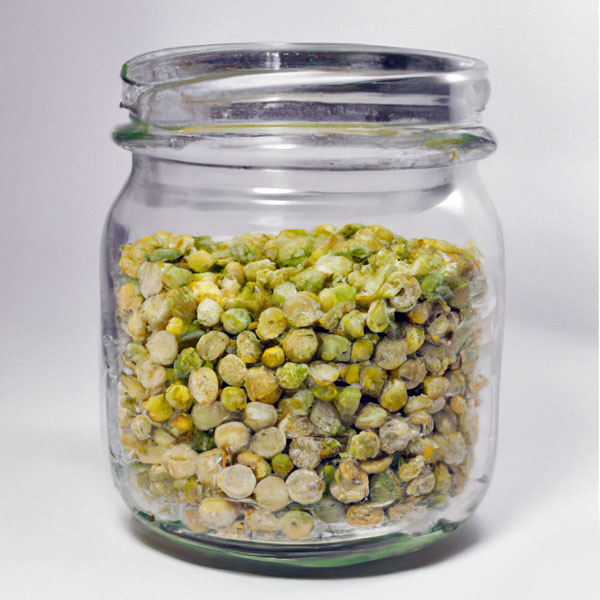
If you’re like me, a tiny life and homesteading enthusiast, or just love the camping or backpacking lifestyle, learning to dehydrate peas is an easy way to make your food last with minimal space.
Can You Dehydrate Peas?

What does it mean to dehydrate food? You heat the food at a low temperature while air circulates in and around it. That’s it! No salt or preservatives are needed. Just a dedicated dehydrator and some tasty veggies to get started.
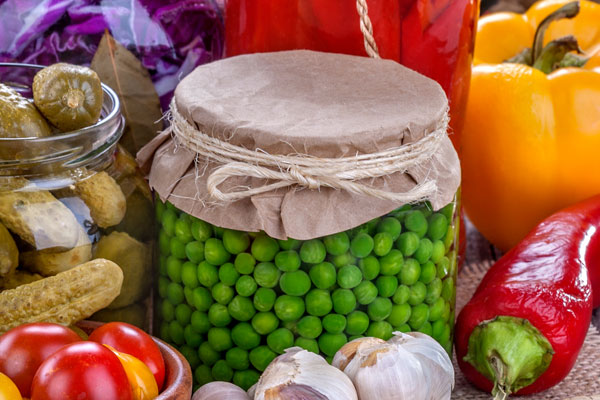
What Varieties Of Peas Can Be Dehydrated?
If you’re a homesteader with a garden, I recommend growing and dehydrating the sugar snap, snow, or English varieties of peas. You can also dehydrate any peas from your garden that you have previously frozen, or frozen peas that you bought at the grocery store. I think they taste delicious without the mushiness of canned peas.
What Parts Of The Peas Can Be Dehydrated?
If you have frozen peas, they’re ready to be dehydrated. For fresh peas from your garden, you just have to get them from pod to bowl.
I usually pick peas the instant their pods bulge and turn bright green. You just split the pod open with your thumb, and the peas easily roll into your bowl, ready to dehydrate.
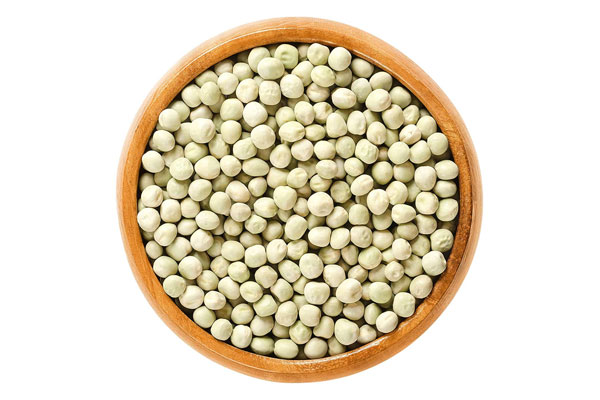
Do I Need To Chop Peas To Dehydrate Them?
I’ve never had to cut up or chop peas before dehydrating them. Good news, right? You don’t have to do this either. Once you get fresh peas from their pod or remove frozen peas from the freezer, there’s no knife, no peeling, no chopping, no hassle.
Do I Need To Blanch Peas To Dehydrate Them?
That depends if you are growing peas like I have, or if you are opting for dehydrating store-bought frozen peas. I’ve personally never found a reason to blanch frozen peas before dehydrating them because they’re typically blanched before the manufacturer freezes them.
On the other hand, if you’re using fresh peas from the garden, blanch them by submerging the shelled peas in boiling water for a couple of minutes. Then, immediately place the peas into ice-cold water long enough to stop them from cooking. Drain the peas on a paper towel until they’re cooled.
How To Dehydrate Peas

When I first started dehydrating peas and other vegetables, I was surprised by how easy and convenient it was. Like most people, I got into food preservation to prevent wasted food and money. Sometimes, a garden can produce too much at once and your tiny home can’t accommodate such abundant yields.
 You don’t want food to spoil before you can eat it. Part of the appeal of homesteading and preserving food means enjoying more variety throughout the year. This makes good economic sense. Enter dehydrating: a simple, easy, and fun solution.
You don’t want food to spoil before you can eat it. Part of the appeal of homesteading and preserving food means enjoying more variety throughout the year. This makes good economic sense. Enter dehydrating: a simple, easy, and fun solution.
Before you dehydrate fresh peas, as mentioned above, blanch them by placing the peas in boiling water for two to three minutes. Make sure you have a large bowl of ice water nearby. When you take the peas off the stove, strain them and place them in the bowl of cold water. Quickly remove the peas, further cooling them on a towel.
Take a look at your peas to make sure they’re still bright green with slightly split skins. This will make them easier to dry. Dried peas are more easily transformed into dehydrated peas. Set aside at least eight to 10 hours for the dehydration process.
Equipment You’ll Need To Dehydrate Peas

You don’t need a lot of equipment to dehydrate peas. In contrast, when canning foods at home, you’d need a lot more equipment, including a boiling water canner, an atmospheric steam canner for acidic foods, a pressure canner for low-acid foods, as well as seven-quart jars or eight- to nine-pint jars. Since your veggies must reach a certain level of acidity for canning, you’ll also need Vitamin C or, more commonly, salt. That’s a lot for a tiny kitchen!
To Dehydrate Peas You’ll Need The Following Items
- Dehydrator
- Liners
- Spreading Tool
- Airtight Containers
- Vacuum Sealer (optional)
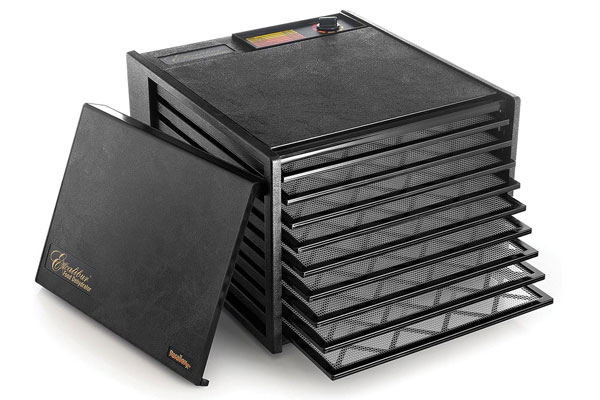
Steps To Dehydrating Peas

When my kitchen gets crowded with fresh veggies from the garden or frozen veggies from the store, I start a dehydrating project with peas first. It creates more space and it’s a super simple process. Blanch the peas from your garden before you begin. There’s no need to thaw out frozen peas before you dehydrate them.
Five Steps to Dehydrating Peas
- Cut a sheet of parchment paper or mesh liner to fit your dehydrator trays.
- Arrange the peas on the trays and remember that they will shrink a lot during this process.
- Set your dehydrator at 125º F (the best temp for peas) and place the trays of peas inside.
- Rotate the trays every few hours.
- Do this for 6–10 hours.
How Do You Tell When Your Peas Are Done Dehydrating?
At around the 6-hour mark, begin checking on the peas. When they’re hard and dry, the dehydration process should be complete. Let them cool completely, and attempt to squeeze one of the peas. If it’s soft, put them back inside the dehydrator until they’re hard and possibly crunchy. It may take up to 10 hours, depending on the amount of peas and your dehydrator.
Can You Use An Oven Instead Of A Dehydrator For Peas?
Yes, you can dehydrate peas in a conventional or solar oven, but I don’t recommend this because a dehydrator is more efficient. However, if you choose an oven to dehydrate your peas, set the temperature between 130–140º F. Follow the steps above, using parchment paper and rotating the tray. Do this every couple of hours and begin checking after 10 hours to make sure you’re not overcooking them. This may take up to 12 hours in an oven.
How To Store Dehydrated Peas

I place the jar in my pantry where I’ll remember to shake it regularly and check it for signs of moisture. If moisture accrues, I dehydrate them some more. If you don’t see signs of moisture, you can package them for long-term food storage. Put them in a clean, airtight container or vacuum seal and they’ll last even longer!
How Long Will Dehydrated Peas Last
Dehydrated peas will last about a year if properly sealed and stored. That’s a fantastic return on your investment that will keep you stocked on peas through all seasons!
How To Use Dehydrated Peas In Your Cooking

I enjoy eating dehydrated peas just as they are! With a sprinkle of seasoning, they’re a tasty snack or a quick way to add crunch to a salad. You can also add them directly into liquid dishes on the stove or in the oven — any dish that requires a bit of cooking. I love putting dehydrated peas into soups, stews, or casseroles. Once rehydrated, I also add them to pasta, risotto, or rice dishes.
Fresh To Dehydrated Peas Conversion
Rehydrating peas before adding them to a dish that requires cooking isn’t necessary. However, when calculating quantities for recipes, keep in mind that one cup of dried peas yields about two cups of rehydrated peas.
How To Re-Hydrate Dehydrated Peas
Dry peas are a great source of fiber and folate with plenty of protein, vitamins, and minerals. They’re also low in fat and sodium. Dehydrating them is an easy and efficient way to increase their shelf-life while decreasing storage volume. Try it out for yourself!
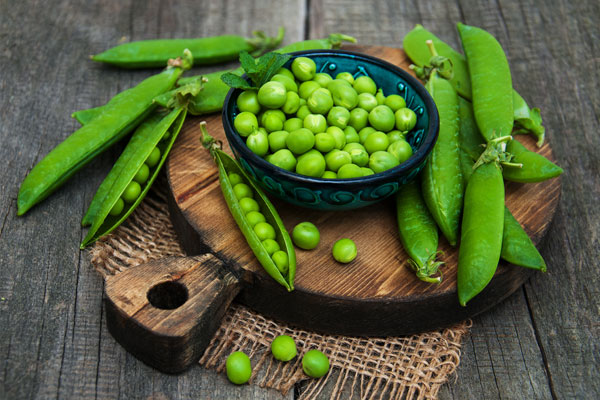
Your Turn!
- What kind of recipes would you enjoy with dehydrated peas?
- Do you prefer airtight containers or vacuum-sealed bags?




Leave a Reply